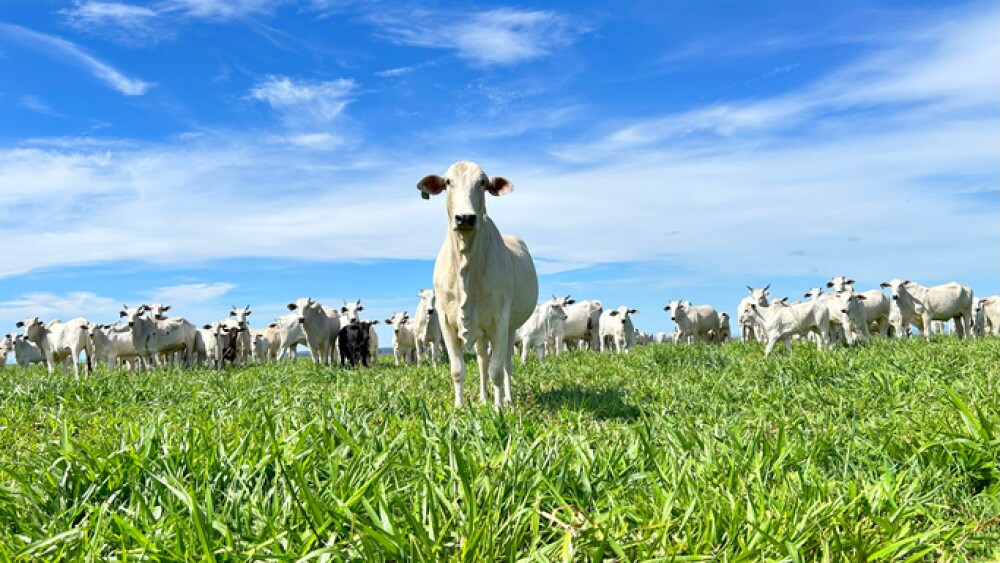The call to develop therapeutics that interfere with aging, helping people live longer, healthier lives, is increasing—and experts say the market opportunity is high.
Pictured: A doctor checks an older patient’s lungs/iStock, fizkes
While the wonders of modern medicine helped to double global life expectancy between 1920 and 2020, human health span has not followed the upward trend. Today, more than ever, people are living more years in poor health. The call to develop therapeutics that interfere with aging, helping people live not only longer but healthier lives, is increasing.
So it isn’t surprising that, even in the current economy, some up-and-coming longevity-focused biotech companies are managing to snag funds to push closer to the clinic with therapeutics that have the potential to transform how we age.
New Kids on the Block
In early September, California-based Rejuvenation Technologies posted $10.6 million in seed financing, led by Khosla Ventures, a firm headed by businessman and entrepreneur Vinod Khosla. Another $4.6 million in grant money brings the company’s initial funding to more than $15 million.
Rejuvenation is looking to rewind the body’s molecular aging clock by targeting telomere shortening. The biotech’s platform is built around optimized telomerase mRNA encapsulated in custom tissue-targeted lipid nanoparticles. Its first target will be fibrotic lung diseases and liver cirrhosis—both conditions primarily diagnosed in people over 50.
Another startup out of Cambridge, founded by a neurosurgeon, is harnessing human pluripotent stem cells for their regenerative capabilities. Clock.bio broke out of the gates with $4 million in hand to pursue a validated “short cut” to reading the genetic codes specific to rejuvenation inside human cells, CEO Markus Gstöttner told BioSpace. In the next 12 months, Gstöttner said the company should be able to identify the most relevant genes to target new pathways to treat age-related disease.
Clock.bio doesn’t yet have a target identified, as that will come with its genome decoding process. The company’s aim is to “extend healthspan by 20 years based on biomarkers of aging” in a Phase III trial by the end of this decade, Gstöttner said.
Why Now
In the current economy, attracting investors is no small feat. Yet progress in the longevity field is vital not only for society but also for the global financial burden, according to a cost-benefit analysis from Sarah Constantin, previously executive director at Longevity Research Institute, which suggests that “aging research could be comparable or superior in cost-effectiveness to the most cost-effective global health interventions.”
Perhaps reflecting this need, the longevity sector is projected to be worth at least $600 billion by 2025, according to Bank of America analysts.
The gap between lifespan and health span—the period of a person’s life when they’re generally in good health—is estimated at around 9 years.
For Rejuvenation, the time was right to enter this space due to the convergence of knowledge and tools. The knowledge around the effect of telomere shortening on aging and age-related disease is not new. However, the mRNA technology the company will utilize has finally had its kinks worked out, contended CEO John Ramunas.
“The challenge is delivery and that was what held us up for a few years,” Ramunas told BioSpace. It was breakthroughs in 2019 and 2021 that brought “ways to deliver messenger RNA with this efficiency and tolerability that it is now ready for the clinic,” he said.
Khosla Ventures, the primary driver of Rejuvenation’s seed round, is invested in three other longevity companies, one of which, Loyal, focuses on extending the lifespan of large dog breeds. Rubedo is targeting senescent cells, which accumulate with age and taint healthy cells leading to stem cell exhaustion and chronic inflammation.
Ramunas pointed to Khosla’s interest as a driving factor in the company’s successful seed round. Vinod Khosla has been a name in the longevity space—and telomeres—since his involvement in funding Geron in the 1990s, when it was focused on modifying human aging by way of telomerase activity. As a leader in the space, his participation means something to other investors, Ramunas said.
“We’re diversifying our strategies by backing various innovative approaches,” Alex Morgan, a partner at Khosla, told BioSpace in an email.
Clock.bio’s lead investor is BlueYard Capital, a firm that backs founders “at the earliest stages.” Its biology arm invests in companies that can help humanity “live long and prosper,” according to its website.
For some funds, Clock.bio and Rejuvenation are still a little too early stage. For instance, Sourav Sinha, a partner and head of strategy for Longevity Vision Fund (LVF), told BioSpace that LVF is a “science first fund” that typically invests at later stages of growth at companies’ Series B and Series C funding rounds, as well as crossover rounds.
Any investment the firm makes is in companies that are not targeting a symptom but leveraging deep science with a platform that can “interrogate and prosecute” the longevity pathways, Sinha said. The majority of the fund’s investments are in companies either approaching the clinic or already in clinical trials.
A key factor for any longevity biotech looking to pull in investors is a pipeline targeting age-related diseases rather than attempting to target aging as a whole, aging research expert Alex Zhavoronkov wrote in Forbes. “Good news is that if the drug works in aging, it will work in some of the age-related diseases,” he stated.
Market Outlook
Over the past five years, investors have shown an increased interest in the longevity space, with investment peaking in 2021 at a record-breaking $7.65 billion. 2022 financing came close to that high at $6.94 billion, pumped up from a $3 billion investment in Altos Labs, presumed to be by Jeff Bezos.
2023 has been a rough go for biotech investments across the board, and the longevity space is no exception. According to a report from Longevity.Technology, the first quarter of 2023 brought in $233 million over 20 deals for longevity-focused companies, in contrast to the previous quarter, which saw more than $1.2 billion in investments. The second quarter of this year posted a small uptick to $282 million, with another 20 deals struck.
It can be hard to pinpoint the potential market size for a successful longevity therapeutic. Studies are “all over the map,” Morgan said. “One solid way to look at this is to see the statins market since it is effectively used as a longevity drug, namely for reducing cardiac risk. Most of them are off-patent, but it’s still $15 billion a year in sales.”
Constantin summed up the market potential this way: “If you like high-risk, high-return, cost-effective lifesaving projects,” then aging research is an especially good investment “because the level of existing funding is so low, and the size of the impact of success is so high.”
Kate Goodwin is a freelance life science writer based in Des Moines, Iowa. She can be reached at kate.goodwin@biospace.com and on LinkedIn.






